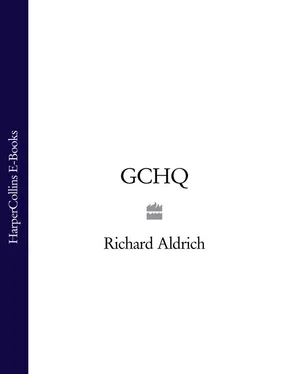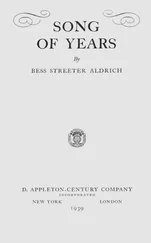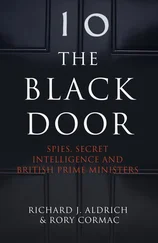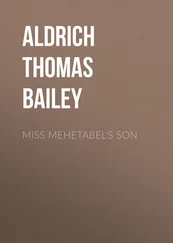‘Never in a million years were we expecting a submarine,’ recalls Beasley. ‘We just could not believe it…Standing together like clockwork soldiers we were ushered towards the escape hatch, just forward of the conning tower and told to drop our holdalls down the steep ladder and follow. Time was of the essence.’ Their escort, Leading Seaman ‘Snowy’ Snow, was horrified to discover that none of his new charges had been trained for submarines, and regarded them as a danger to themselves and the rest of the crew. One of Beasley’s three fellow sparkers called out: ‘What’s the name of this iron coffin?’ The answer came back, ‘HMS Turpin. ’ 28
HMS Turpin was a Group 3 T-class submarine which entered service at the end of the Second World War. In 1945 the Allies were aware that their submarine technology was well behind that of the German U-boats, especially Hitler’s legendary late-model Type-21s. The Group 1 and Group 2 submarines that had been built earlier in the war were scrapped, but like the ill-fated USS Cochino, the Turpin and seven other Group 3 T-class submarines were sent for what was termed ‘Super-T Conversion’, essentially an interim measure before new classes of submarine came on stream. Crucially, the later Group 3 submarines were of welded rather than riveted construction, making them more streamlined than their predecessors. Their hulls were now lengthened to accommodate more electronic equipment, in some cases a sigint listening room, together with additional electric motors and new batteries. The deck gun was removed and the conning tower replaced with a more modern design that enclosed the periscopes and masts. The radar and sonar were improved. All eight boats could now achieve a speed of over eighteen knots, giving them an excellent chance of evading any Soviet hunters. 29
Tony Beasley and his three ‘Telegraphist Special’ comrades were treated to a tour of the Turpin. Snowy explained that, together with all the recent conversions to bring it up to the standard of the most advanced German U-boats, extra rib supports had been fitted to the pressure hull so that it could exceed its formal safety depth in case of an emergency. As the sparkers toured the submarine, their place in the operational jigsaw gradually became clear. Of the eight submarines that had been converted to Super-T specification, the Turpin and the Totem had been stripped of some of their radar and echo-sounding equipment, and had instead been fitted out with the most up-to-date sigint collection technology. The sigint receivers were attached to the snorkel and the aft periscope, and the wires trailed everywhere. The sigint operators had their own listening room near to the boat’s operations centre.
Questions as to where they were going were met with blank looks. Only the Commander, John Coote, knew their destination, and he was keeping his mouth firmly shut. Before departure, the Turpin received its final blessing when a harbour tug came out and painted over the serial number on the conning tower and spot-welded shut the escape hatches. This was because of the danger of ramming by a Soviet destroyer, which would rupture the hatches. With the escape hatches welded shut, all the escape apparatus was useless, so it had been removed, making space for more stores for the long journey ahead. The mission was code-named ‘Operation Tartan’, and the destination was the exercise area of the Soviet Northern Fleet on the Kola Inlet and the Rybachi Peninsula, deep inside the Arctic Circle.
During early March 1955 the crew endured a long journey north. Once they were within the Arctic Circle the sigint monitors began their work. Beasley’s colleagues monitored comint while he listened for ‘X band’ and ‘S band’ radar. While doing this, to his surprise he detected an unusual short-range radar known as ‘Q band’. GCHQ had warned him before departure that anything that was transmitted on ‘Q band’ would have a range of no more than two and a half miles. The signal faded and then returned much stronger. Beasley realised they were being rammed, and despite being new to submarines, instinctively shouted out the command to crash dive. This was a perilous business with the periscope and the snorkel still raised. Water began pouring into the control room through the snorkel. The periscope was quickly lowered, and its handles, that weighed close to a ton, hit Beasley, sending him crashing across the control room and inflicting a debilitating lifelong neck injury. The Turpin levelled off at 120 feet below the surface. The extremely cold water made sonar unreliable at any depth, and Soviet ships came and went for the next few hours, searching energetically, but without finding their quarry. Glad to have evaded the submarine hunters, Commander Coote waited for them to depart and then set a course for home. 30
Back in London, the Admiralty Signals Division was doing what it could to protect the secrecy of its submarine missions. One of the activities it undertook was a communications security survey of the radio transmission from HMS Totem, Turpin’s sister ship, while she was on an identical mission off the Soviet coast code-named ‘Operation Defiant’. The results were not good. The Signals Division warned the Director of Naval Intelligence that the KGB’s listeners, the Soviet equivalent of GCHQ, might well pick up ‘unusual very secret traffic on a home station submarine broadcast’ continuing over a number of weeks, and might also notice that Totem was absent from the normal exercise areas. In future, it suggested that a suitable cover plan with ‘dummy communications’ be thought up. This dummy traffic would have to run on a long-term basis if special submarine operations were to continue to be carried out at short notice without the Soviets identifying what was going on. 31
Tony Beasley’s next mission to the Arctic Circle, ‘Operation Sanjak’, was yet more eventful. In July 1955 HMS Turpin had been loitering off the Soviet coast for over two weeks, but was experiencing problems with its elint equipment. Reception was good while the submarine was stationary, but not when it was in motion. They moved to the western edge of their patrol area so they could surface and see what was wrong. After a perilous climb up the submarine fin in a rolling sea, the problem, which proved to be a cross-threaded aerial, was resolved and Turpin submerged once more to complete the last few days of her patrol. The elint profiles of several radars from their intercept target list had already been collected, and with only two days to go they picked up an unusual contact. Commander Coote decided to chase this contact to the edge of their permitted area, moving closer to the coast than was allowed under their strict operating rules. Suddenly, Beasley intercepted an ‘X band’ radar very close to them, and picked up a contact dead ahead. The Turpin crash dived immediately.
All four sigint operators now reported multiple contacts. They were under attack. The warning was superfluous, since the propellers of several ships were quite audible as they passed directly over the submarine. Then came the horrible sounds of splashes. These were depth charges. Beasley recalls:
The first depth charge exploded way under our depth of 120 feet, followed by others, from different directions. A rather loud ‘clunk’ on our forward casing was followed by an enormous explosion which shook the boat, followed by others at a greater depth. Another depth charge exploded close above us rocking the boat much as before…Depth charging continued for longer than I care to remember.
Commander Coote took the submarine deeper and deeper, levelling off at their safety limit of 280 feet. Here they felt relatively secure, and decided not to move, relying on the cold water to render the Soviet sonar ineffective. However, they were painfully conscious that they were drifting in a strong current towards an area marked on their chart as being a probable Soviet minefield.
Читать дальше












